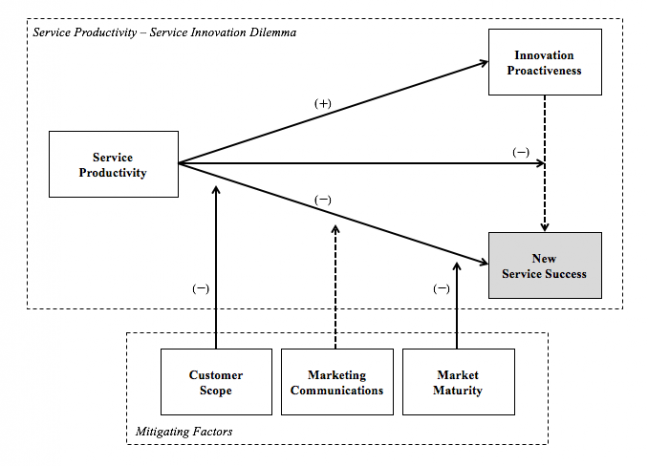After several years of working on it, I’m happy to inform that we just got our study about service productivity and service innovation accepted at Journal of Service Research (JSR)– with Jan Klein (Tilburg University), Henrikki Tikkanen (Aalto University), and Xueming Luo (Temple University). The final title for the study is, “The Dilemma of Service Productivity and Service Innovation” and you can download it in this link. (Notice also that an earlier version of the study’s theoretical parts appeared in the CERS-published book Nordic School – Service Marketing and Management for the Future in 2015.)
Looking back, I’d like to briefly comment on what originally motivated us to study this topic, in the first place – we started with the data collection more than 5 years ago, in 2011–2012. (And yes, the duration of the academic publication processes, especially for studies targeted at the highest ranking journals, like JSR, may indeed take 5 years or more…)
At any rate, we were originally motivated to study this topic, because we kept observing practical cases and anecdotes about the failures of firms that once boasted extreme productivity and efficiency in their current service businesses, to develop and launch new service innovations, successfully. Examples of such firms ranged from ICT industry firms such as Nokia, Polaroid, AOL, and Yahoo to retail industry firms such as Kmart, Sears, and Circuit City. Observing the same pattern in many cases, we were somewhat surprised that not much academic research had been conducted on this pattern – or what we would come to call the service productivity–service innovation dilemma.

In other words, we got highly interested in conducting a systematic empirical investigation of this dilemma: whether and why the firm’s productivity in its current service business might compromise its success with new service innovations. As our empirical context, we decided to select the financial services industry, because among firms of this industry, there is a lot of variation both in the service productivity and innovativeness.
Theorizing on this dilemma, we soon grasped that the dilemma might essentially be caused either by productive firms’ (or their managers’) lack of willingness to innovate, or by such firms’ lack of ability to innovation – or both.
In the empirical investigation, we therefore then decided to unpack the dilemma in these terms, and test whether the reason of the dilemma is more in the lack of willingness, or the lack of ability, to innovation.
The results of our empirical investigation interestingly unveiled a slightly more complicated pattern, underlying the service productivity–service innovation dilemma. That is, we found that being productive in existing services actually increases a firm’s willingness to innovate new services proactively. However, existing productivity seems to simultaneously decrease the firm’s abilities to develop and bring these services innovations to the market successfully. To paraphrase, firms with high productivity in their existing business seem to get overconfident and overoptimistic to more proactively develop and launch new service innovations – somewhat ignoring the perhaps compromised ability of their organisations to do so.
Does anything save the highly productive firms’ innovation efforts, then? Well, the point with our study is that the service productivity–service innovation dilemma is in fact quite a fundamental dilemma – and therefore difficult to deal with. However, our study also points out that the dilemma gets alleviated if the (highly productive) firm maintain a careful focus on selected customer target groups, and their needs, when introducing the service innovation. That is , don’t assume that your broad current customer base will buy whatever innovation you present to them, but carefully craft your innovations for focused customer groups.
After all, most important in marketing is to carefully segment customers and to carefully focus on selected customer segments’ needs.
Grönroos Professor in Marketing
